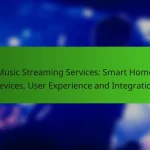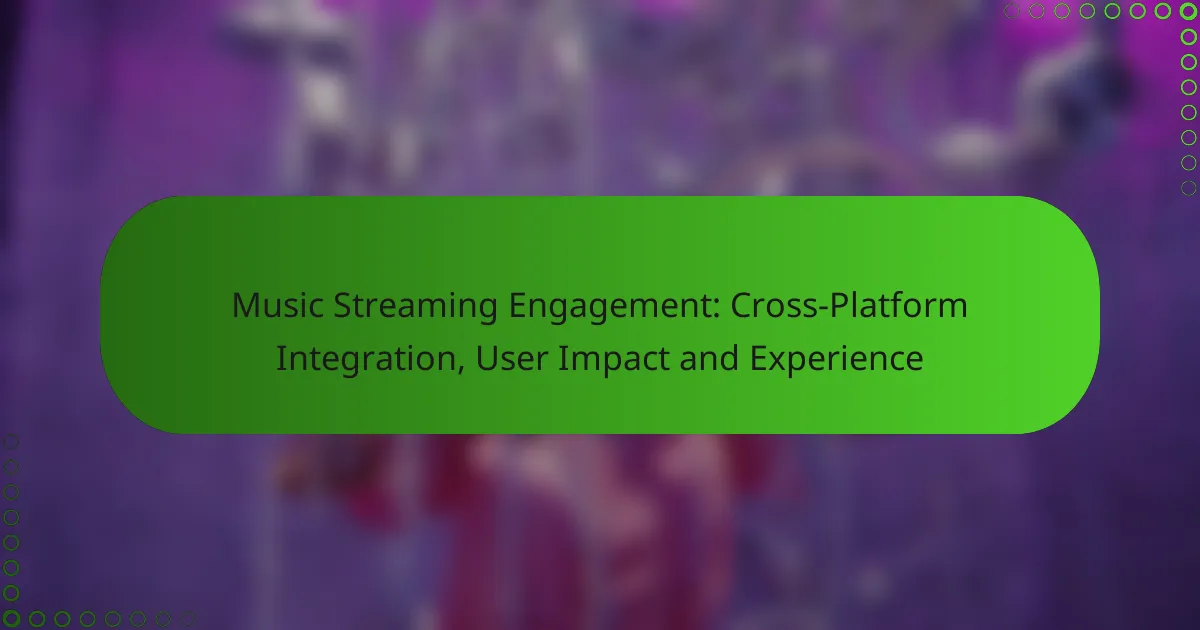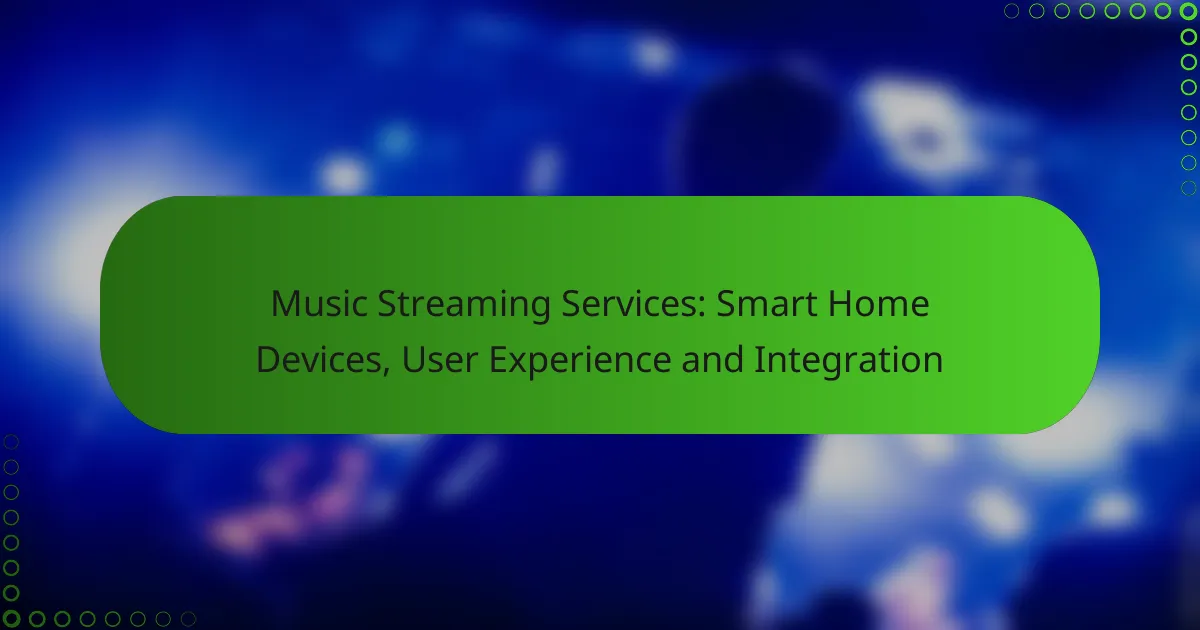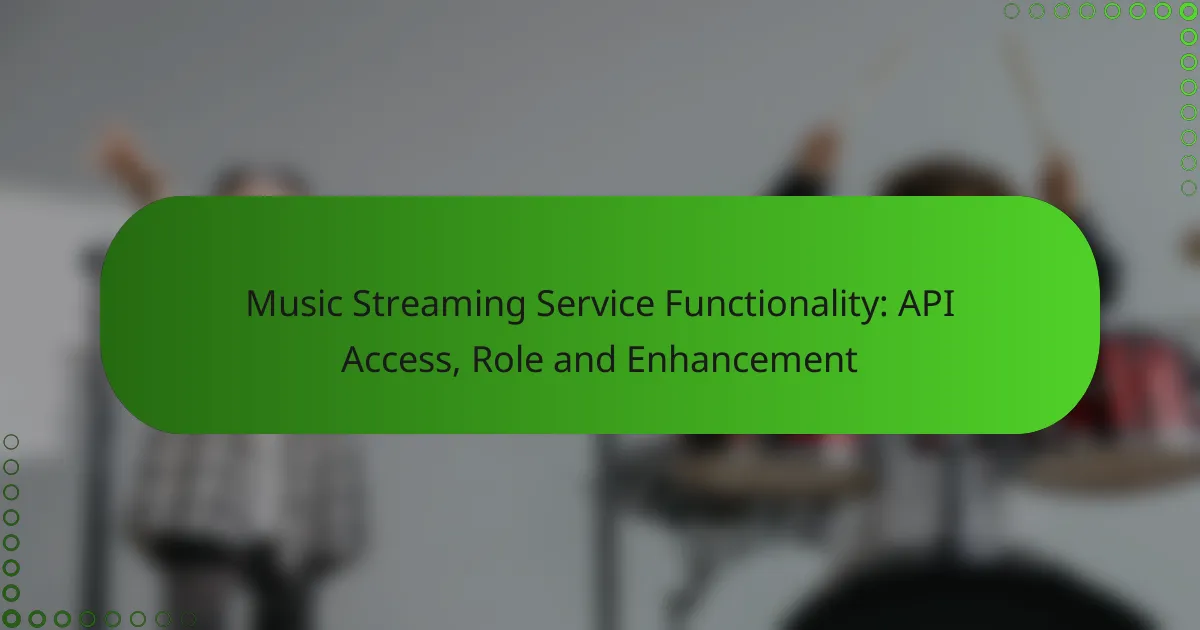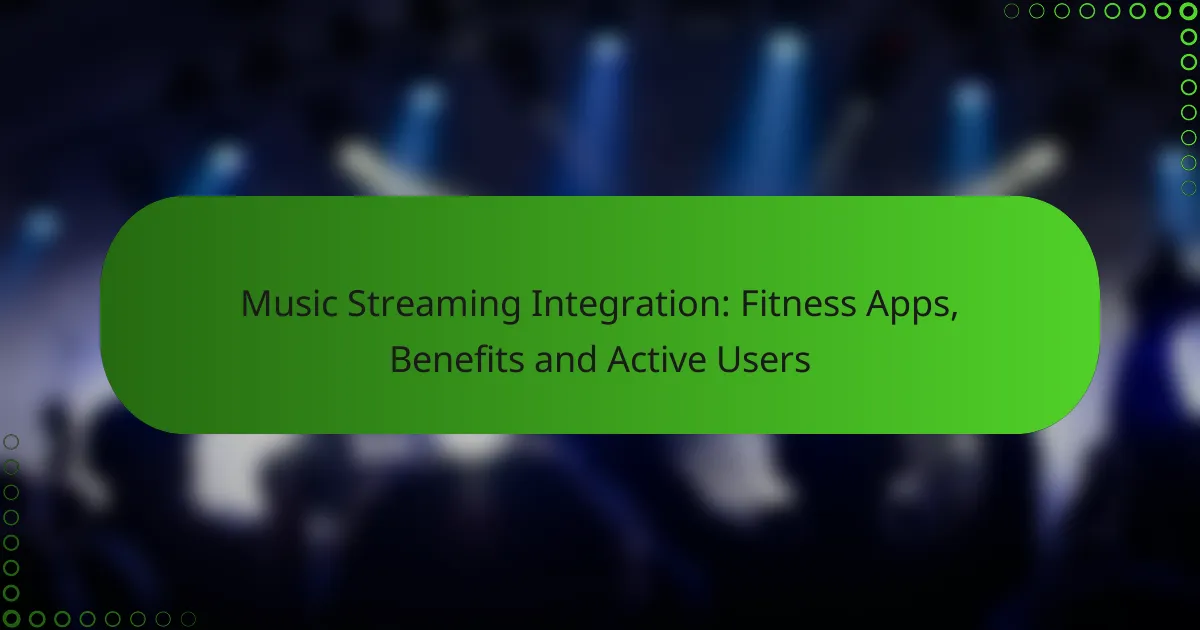In the rapidly evolving landscape of music streaming, cross-platform integration plays a crucial role in enhancing user engagement by enabling seamless access to content across multiple devices. This interconnected experience not only boosts user satisfaction but also fosters longer interactions with music services. By analyzing key metrics such as active user growth and engagement rates, platforms can gain valuable insights into user behavior and preferences, ultimately improving their offerings and retaining subscribers.

How does cross-platform integration enhance music streaming engagement?
Cross-platform integration significantly boosts music streaming engagement by allowing users to access their favorite content seamlessly across various devices and platforms. This interconnectedness enhances user satisfaction and encourages prolonged interaction with music services.
Increased user accessibility
Cross-platform integration increases user accessibility by enabling listeners to enjoy music on multiple devices, such as smartphones, tablets, and smart speakers. This flexibility allows users to switch between devices without losing their place in playlists or recommendations.
For example, a user can start a playlist on their laptop and continue listening on their phone while commuting. This convenience fosters a more engaging listening experience and encourages users to explore more content.
Seamless content sharing
Seamless content sharing is a key benefit of cross-platform integration, allowing users to easily share their favorite tracks or playlists with friends across different social media platforms. This sharing capability not only promotes individual music preferences but also enhances community engagement around music.
For instance, a user can share a song on Instagram or Facebook, leading to increased visibility for the artist and potentially attracting new listeners. This interconnected sharing amplifies the reach of music content and fosters a sense of community among users.
Improved user experience
Cross-platform integration improves user experience by providing a consistent interface and functionality across devices. Users can expect similar features, such as personalized recommendations and curated playlists, regardless of the platform they are using.
Additionally, integration with other services, like social media or smart home devices, enhances the overall experience. For example, users can control their music playback through voice commands on smart speakers, making it easier to enjoy music without needing to interact with a screen.

What are the key metrics for measuring user impact in music streaming?
Key metrics for measuring user impact in music streaming include active user growth, engagement rates, and content consumption patterns. These metrics help platforms understand user behavior, preferences, and overall satisfaction, which are crucial for improving services and retaining subscribers.
Active user growth
Active user growth refers to the increase in the number of users engaging with a music streaming service over a specific period. This metric is vital as it indicates the platform’s ability to attract new listeners and retain existing ones. A healthy growth rate is typically in the double digits, reflecting effective marketing strategies and user satisfaction.
To track active user growth, platforms often analyze monthly active users (MAU) and daily active users (DAU). Comparing these figures helps identify trends and seasonal patterns, allowing services to adjust their offerings accordingly.
Engagement rates
Engagement rates measure how often users interact with the content on a music streaming platform. This can include actions like song plays, playlist creations, and shares. High engagement rates often correlate with user satisfaction and loyalty, indicating that users find value in the content provided.
To enhance engagement, platforms should focus on personalized recommendations and curated playlists. Strategies such as gamification, where users earn rewards for listening or sharing, can also boost engagement rates significantly.
Content consumption patterns
Content consumption patterns analyze how users listen to music, including the types of genres, artists, and formats they prefer. Understanding these patterns helps streaming services tailor their libraries and marketing efforts to meet user demands. For instance, if data shows a spike in interest for a particular genre, platforms can promote related content more aggressively.
Platforms can gather insights on content consumption through analytics tools that track user behavior. Regularly reviewing these patterns allows services to adapt to changing tastes and enhance user experience, ultimately driving retention and growth.
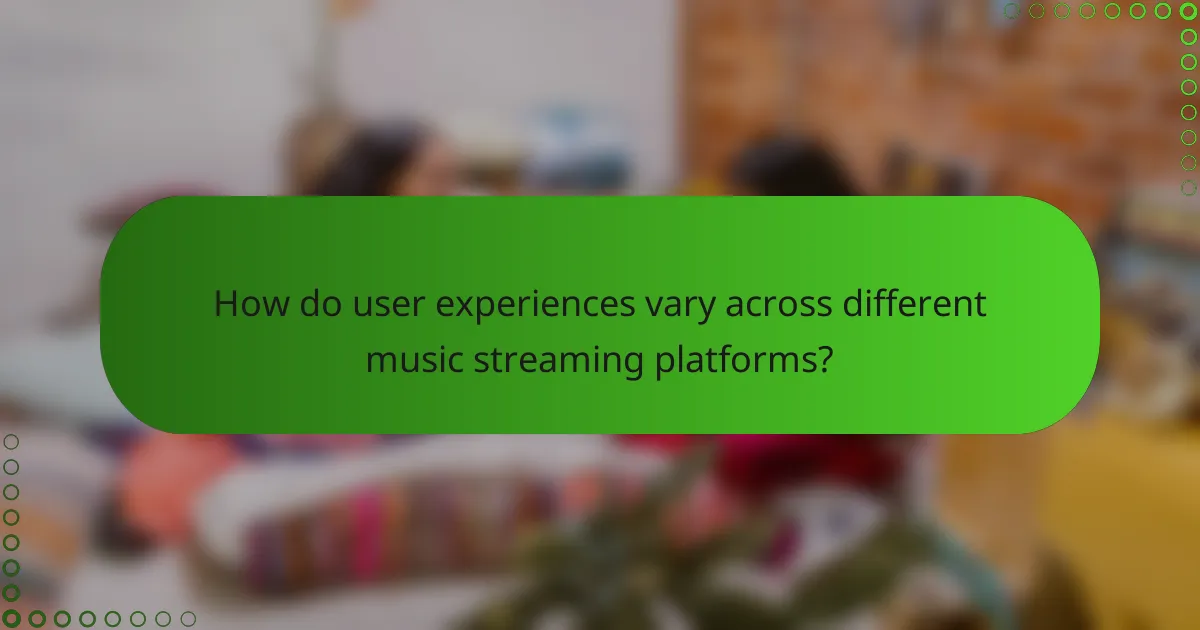
How do user experiences vary across different music streaming platforms?
User experiences across music streaming platforms can significantly differ based on interface design, personalization features, and community engagement. Each platform offers unique strengths that cater to various user preferences and habits.
Spotify user interface
Spotify’s user interface is designed for ease of navigation, featuring a clean layout that allows users to quickly access playlists, albums, and recommendations. The platform emphasizes discovery through curated playlists and algorithm-driven suggestions, making it easy for users to find new music tailored to their tastes.
One notable feature is the “Discover Weekly” playlist, which updates every Monday with personalized song recommendations based on listening habits. Users can also create and share playlists, fostering a sense of community and collaboration.
Apple Music personalization
Apple Music excels in personalization by leveraging user data to create tailored experiences. The platform offers a “For You” section that curates playlists and albums based on listening history, preferences, and even location.
Additionally, Apple Music integrates with Siri, allowing users to control playback and discover music through voice commands. This hands-free option enhances user experience, particularly for those who prefer a seamless interaction with their devices.
YouTube Music community features
YouTube Music stands out with its community-oriented features, allowing users to engage through comments, shares, and user-generated playlists. This social aspect encourages interaction among listeners, creating a more immersive experience.
The platform also offers music videos and live performances, appealing to users who enjoy visual content alongside audio. Users can subscribe to channels and receive updates on new releases, enhancing their connection to artists and the music community.
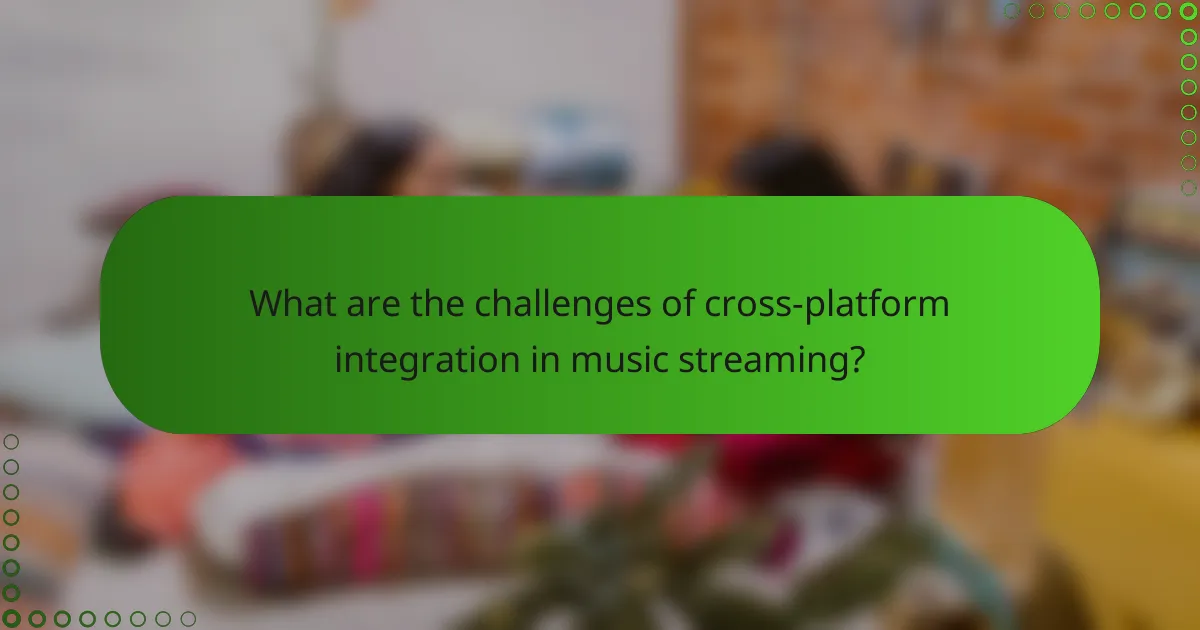
What are the challenges of cross-platform integration in music streaming?
Cross-platform integration in music streaming faces several challenges, primarily related to data privacy, technical compatibility, and user experience. These issues can hinder seamless access and functionality across different devices and services.
Data privacy concerns
Data privacy is a significant challenge in cross-platform music streaming, as users often share personal information across multiple services. This raises concerns about how data is collected, stored, and used, leading to potential breaches of privacy regulations such as GDPR in Europe or CCPA in California.
To address these concerns, music streaming platforms must implement robust data protection measures and be transparent about their data practices. Users should be informed about what data is shared and have control over their privacy settings to mitigate risks.
Technical compatibility issues
Technical compatibility issues arise when different music streaming platforms use varying formats, protocols, or APIs, which can lead to integration challenges. For instance, a user may find it difficult to sync playlists or access their library across different devices if the platforms do not support the same standards.
To overcome these issues, platforms should adopt widely accepted standards and ensure their systems can communicate effectively. Regular updates and user feedback can also help identify and resolve compatibility problems, enhancing the overall user experience.
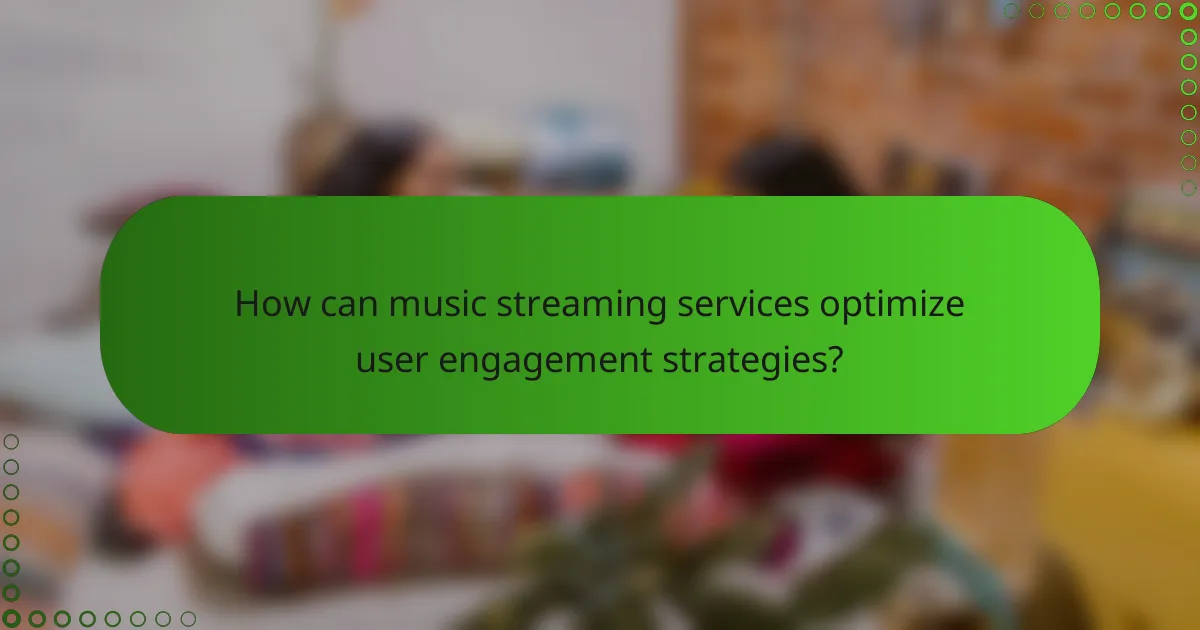
How can music streaming services optimize user engagement strategies?
Music streaming services can enhance user engagement by implementing targeted advertising campaigns and creating personalized playlists. These strategies not only attract new users but also retain existing ones by providing tailored experiences that resonate with individual preferences.
Targeted advertising campaigns
Targeted advertising campaigns allow music streaming services to reach specific user demographics effectively. By analyzing user data such as listening habits and preferences, services can create ads that are more likely to engage listeners, increasing click-through rates and conversions.
For example, a service might promote a new album from a genre that a user frequently listens to, or offer discounts on premium subscriptions to users who have shown interest in ad-free experiences. This approach can lead to higher user satisfaction and increased revenue.
Personalized playlists and recommendations
Personalized playlists and recommendations are crucial for keeping users engaged on music streaming platforms. By utilizing algorithms that analyze user behavior, these services can curate playlists that reflect individual tastes, making the listening experience more enjoyable.
Services often employ techniques such as collaborative filtering and content-based filtering to suggest new music. For instance, if a user frequently listens to indie rock, the platform may recommend similar artists or songs, enhancing user retention and encouraging exploration of new music.
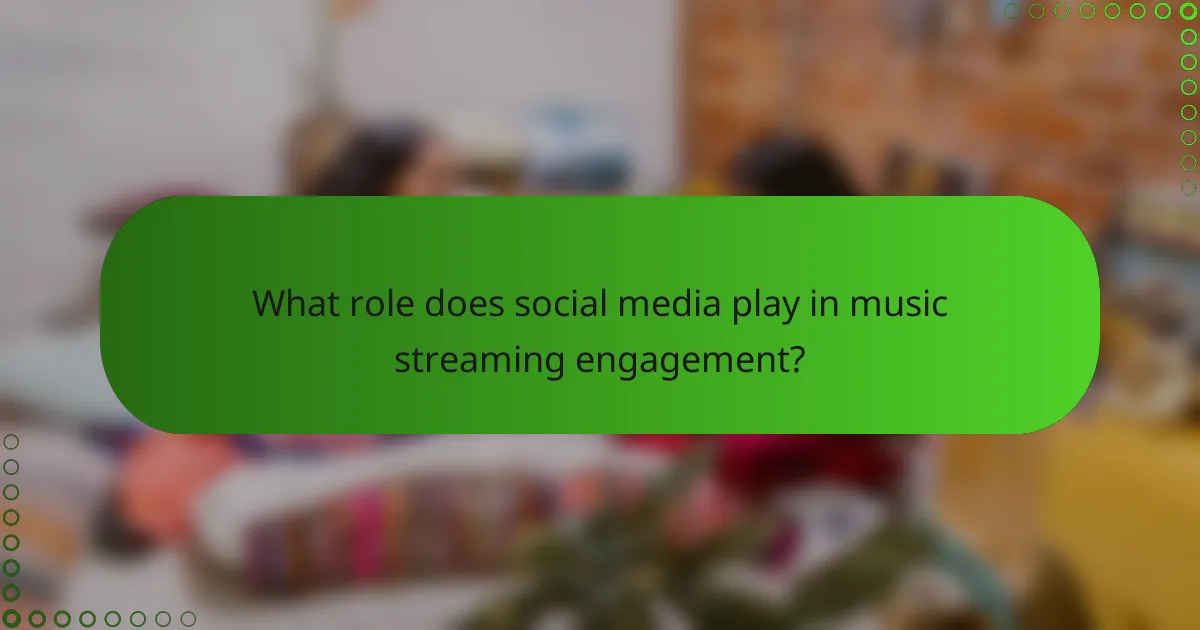
What role does social media play in music streaming engagement?
Social media significantly enhances music streaming engagement by facilitating artist-fan interactions and promoting music discovery. Platforms like Instagram, TikTok, and Twitter allow users to share their favorite tracks, creating a community around music that drives streaming numbers.
Influencer collaborations
Influencer collaborations are a powerful strategy for boosting music streaming engagement. By partnering with influencers who resonate with their target audience, artists can reach new listeners and create buzz around their releases. These collaborations often include promotional posts, music challenges, or exclusive content that encourages followers to engage with the music.
For example, a popular TikTok creator might feature a new song in a dance challenge, leading to viral trends that significantly increase streams. Artists should consider selecting influencers whose audience aligns with their genre to maximize impact.
When planning influencer campaigns, it’s essential to establish clear goals and metrics for success, such as engagement rates or streaming increases. Artists should also be mindful of authenticity; partnerships that feel genuine are more likely to resonate with audiences and drive engagement.

